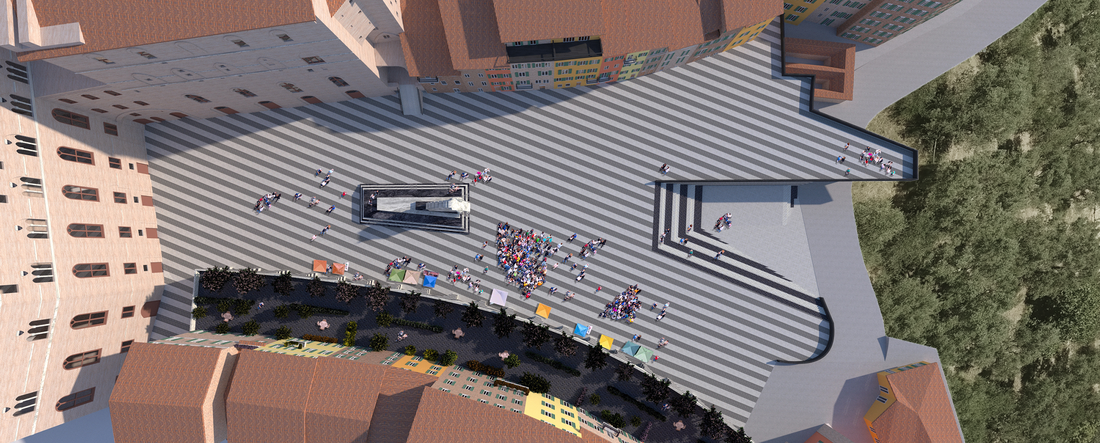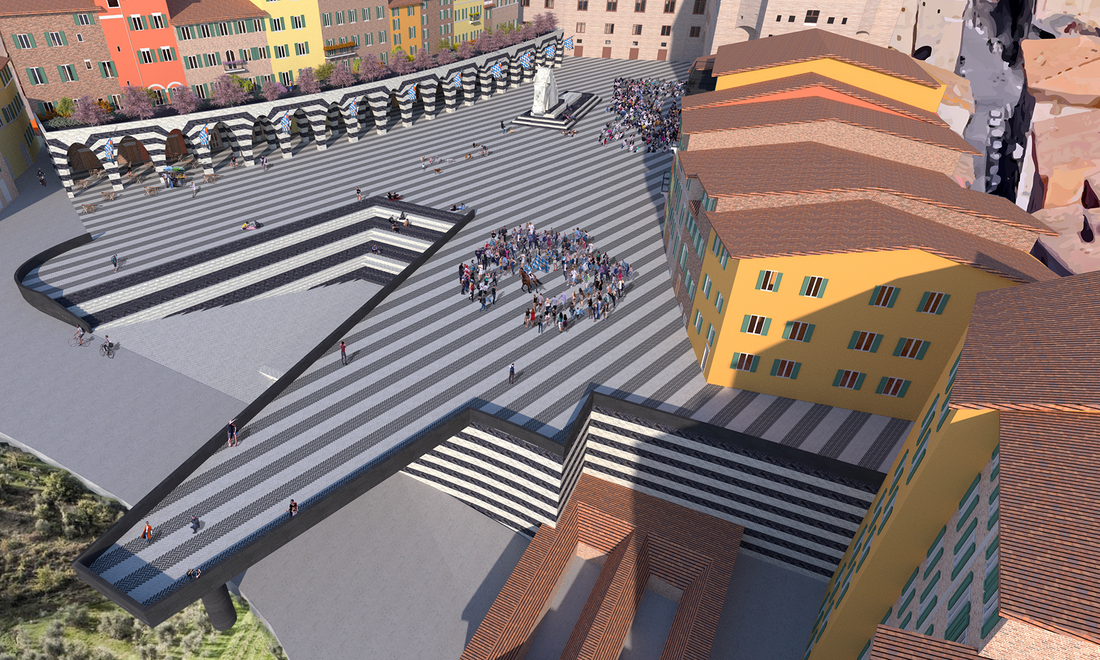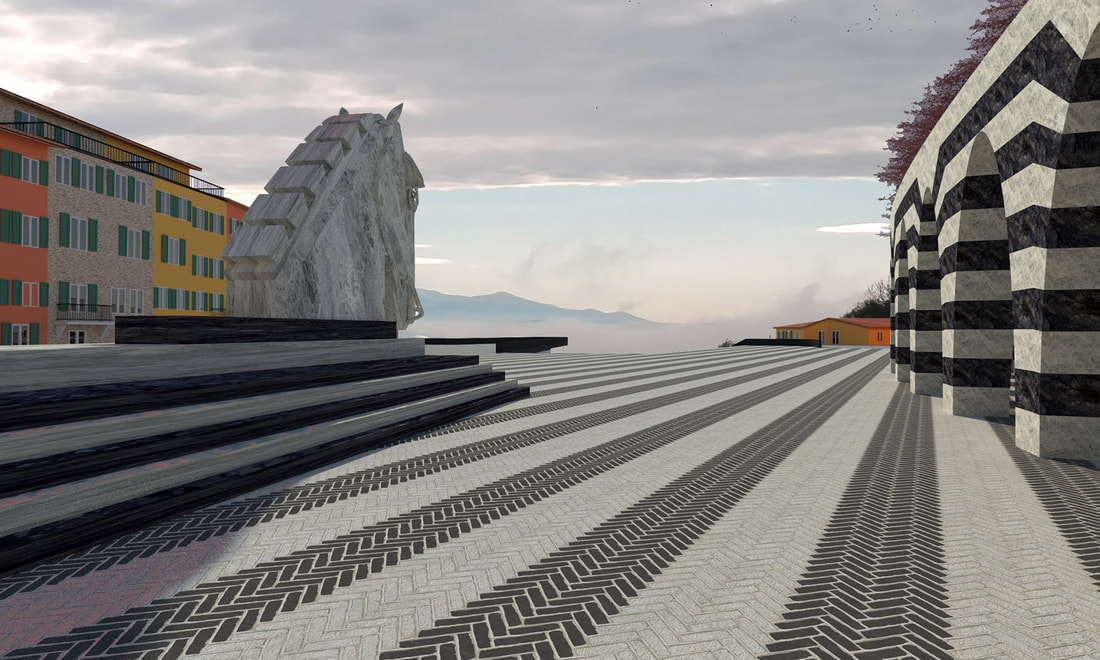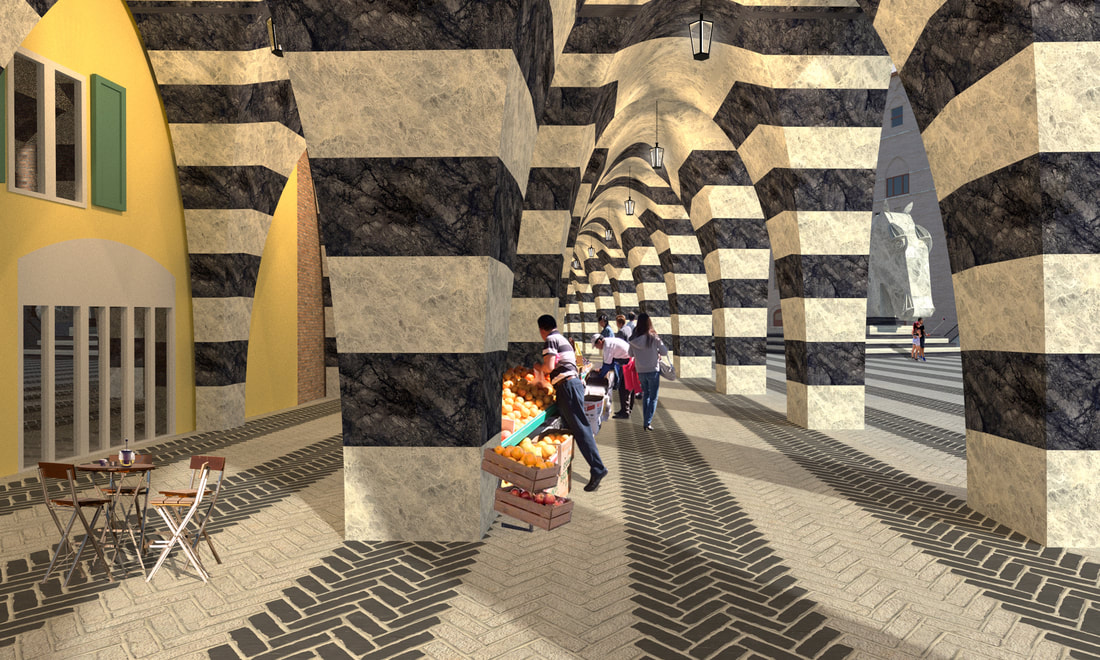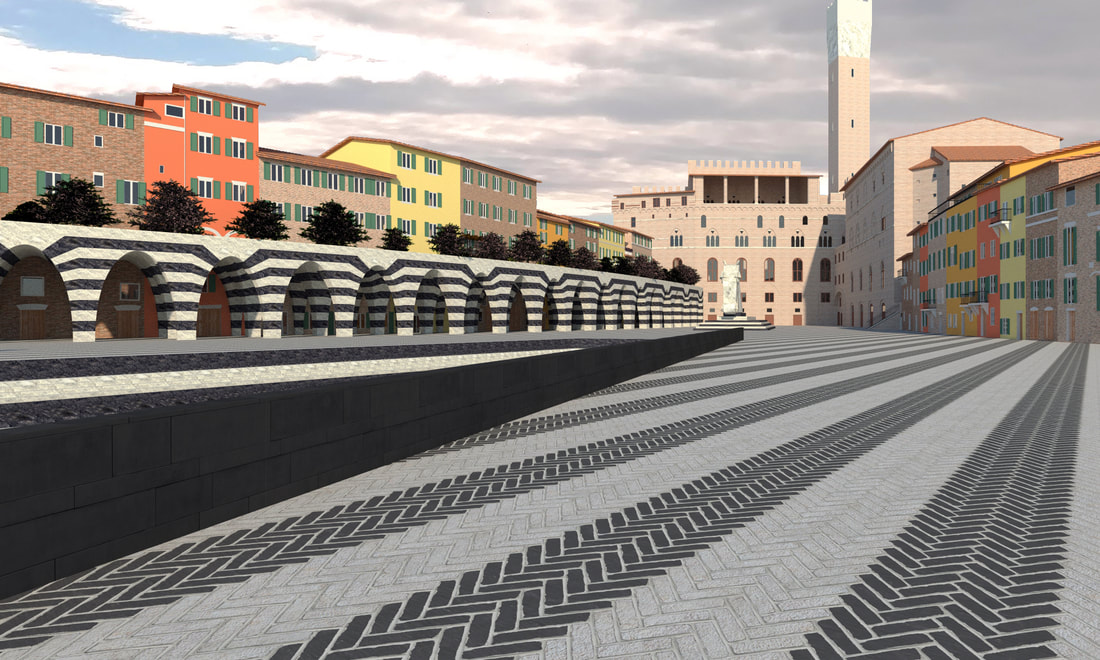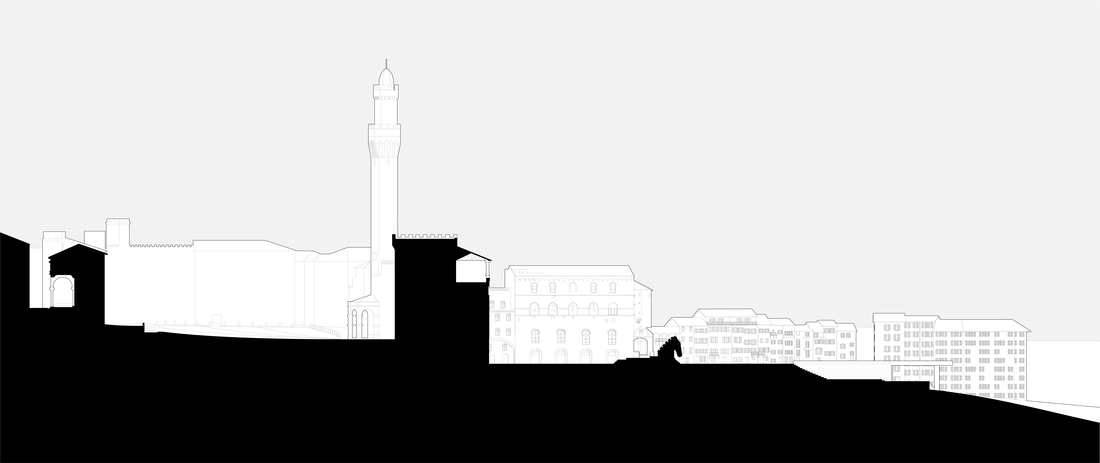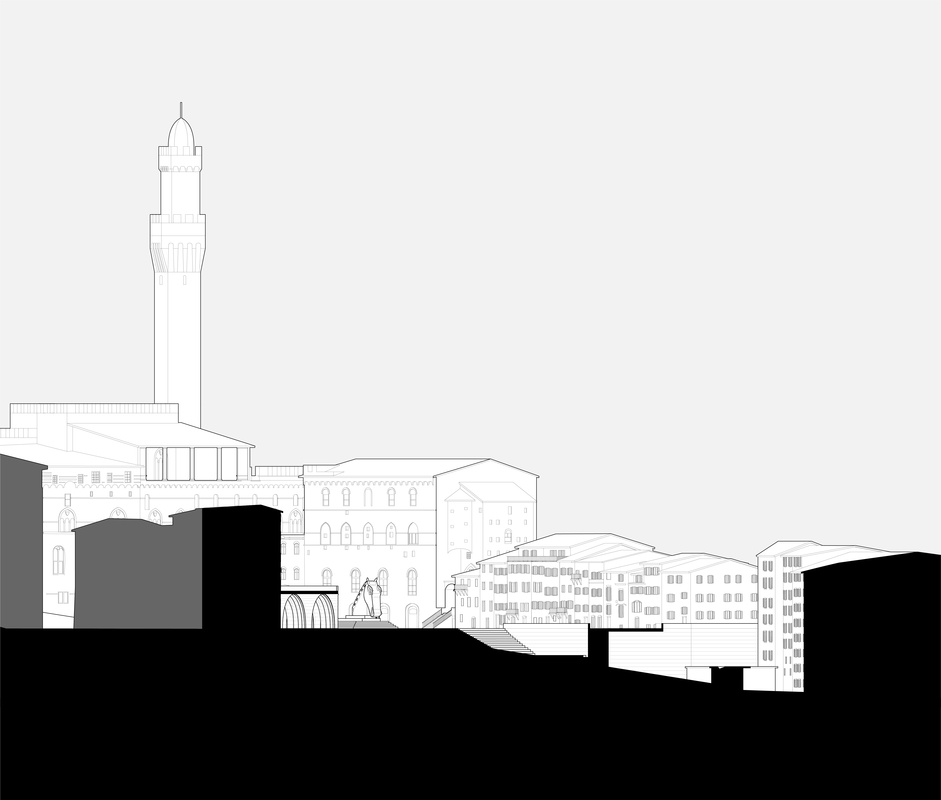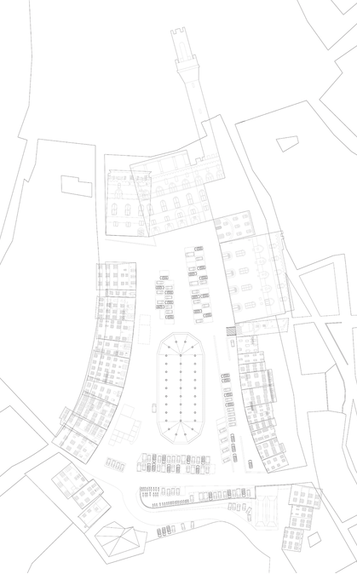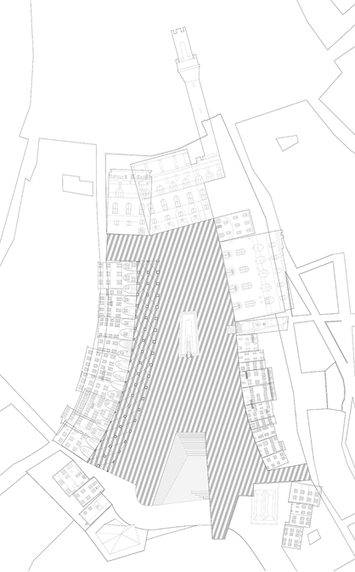Piazza del Mercato / 2018. Siena, Italia
Collaboration with Amanda Brunner & Anthony Bruno
Collaboration with Amanda Brunner & Anthony Bruno
This project takes a parking lot in the historic center of Siena, Italy, and redesigns it as a piazza. In the 1300s, Piazza del Mercato was separated from the Piazza del Campo with a retaining wall. The two piazzas were later further separated by Palazzo Pubblico, the seat of government in Siena. While both piazzas have held a high level of importance throughout history, this changed when in the twentieth century, Piazza del Mercato was converted into a parking lot with a central loggia. At present, there is an antiques market once per month, and the historic neighborhood Contrade Dell’Onda has had celebrations in this piazza, but the space is generally underutilized. This renovation of the Piazza del Mercato introduces black and white stripes across the space, inspired by Siena’s Duomo and city colors. The striped are in a herringbone brick pattern similar to the one in Piazza del Campo. The current central loggia is demolished, and is rebuilt as a striped marble loggia attached to the buildings on the piazza’s west side. This new market is in dialogue with current and new shops within the adjacent buildings. Black and white stairs are cut into the retaining wall at the southern end of the piazza, as a more direct path towards the countryside as well as a place to sit and view the landscape. Adjacent to the stairs, a viewing platform extends away from the city. In the middle of the piazza, a horse head statue is placed upon several steps, looking towards the landscape. This head is modeled after a temporary wooden horse built in the piazza by the Contrade Dell’Onda to celebrate their victory in the Palio, and is an anchoring object within the space. This project creates a more vibrant and usable space that has a separate identity from Piazza del Campo as to not compete with it, but to complement it. Our Piazza del Mercato uses the Siena’s history, materiality, and relation to the landscape, as well as Piazza del Mercato’s program and history in a way that creates a new, bold space for Siena while seamlessly fitting in with the context.
